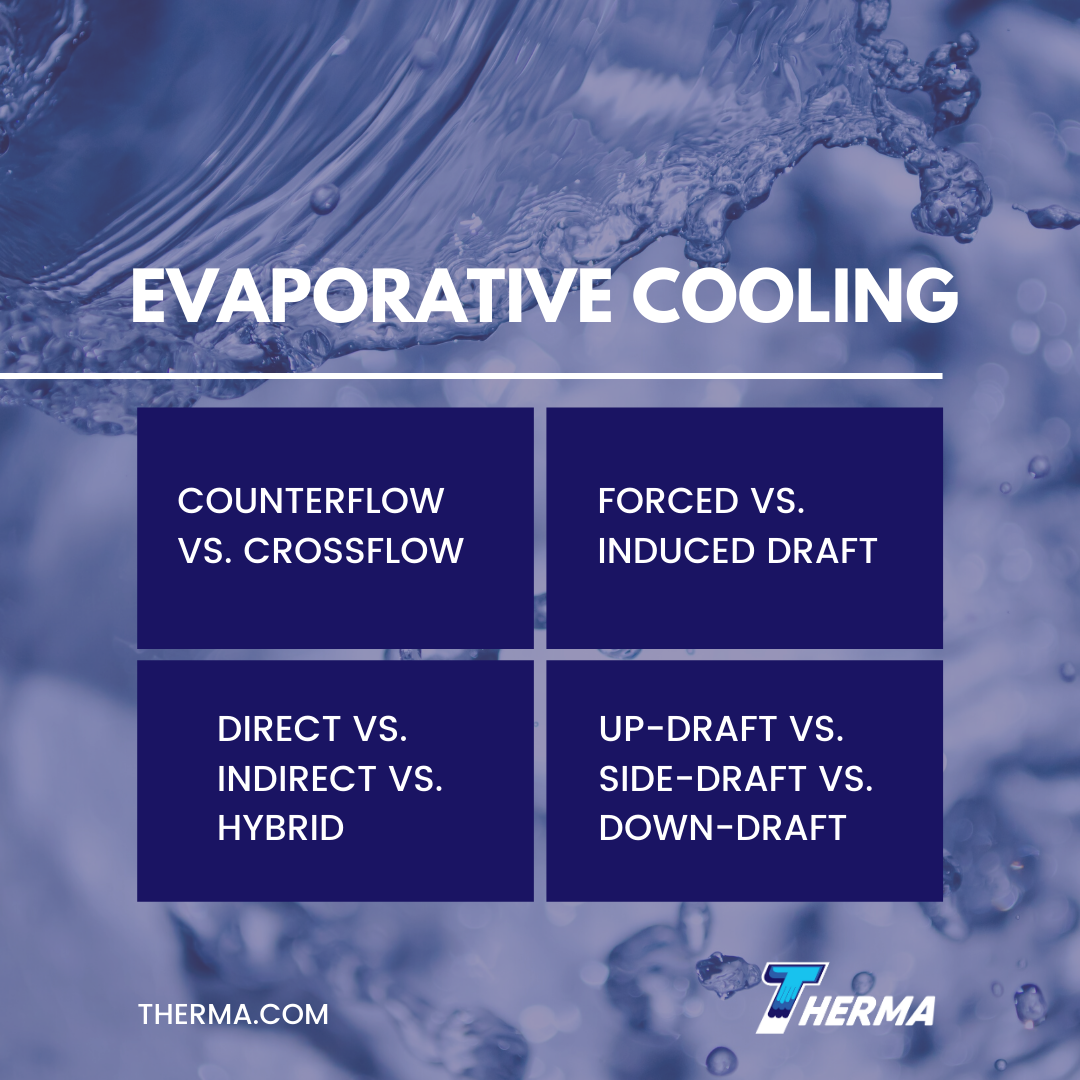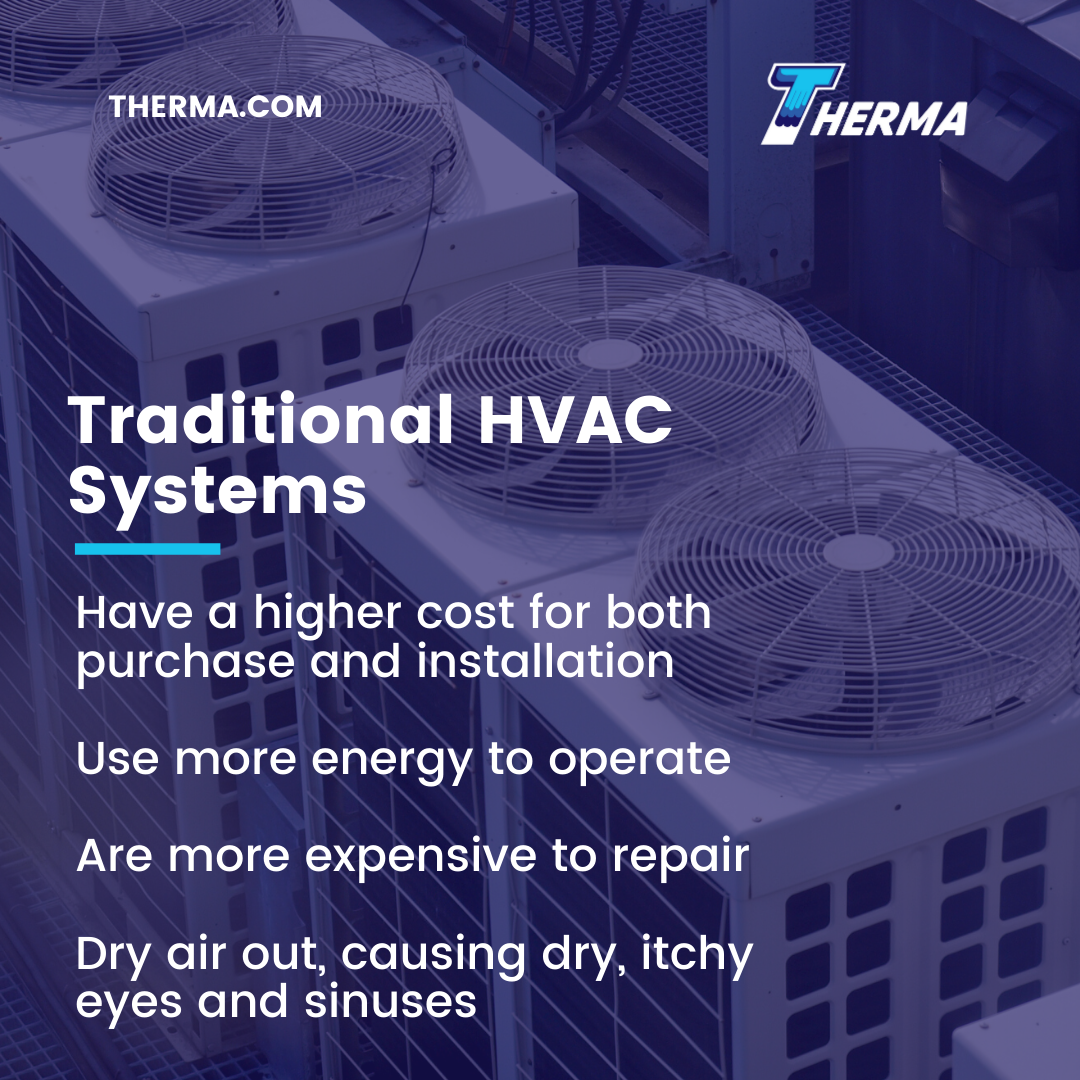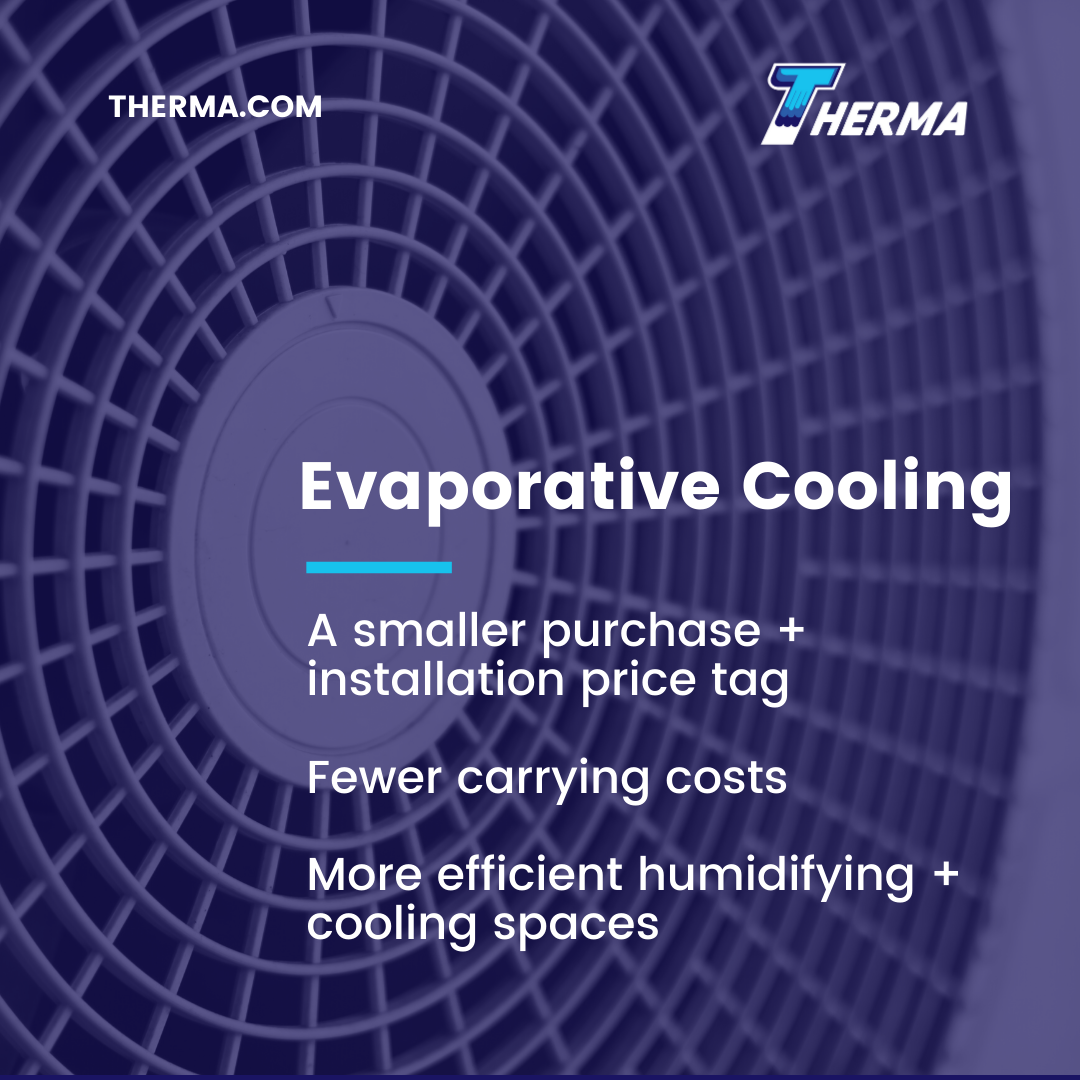Today, we’re discussing evaporative cooling, really an introduction. Traditional air conditioning can be cost-prohibitive in some areas and create air that is too dry for others.
Evaporative Cooling Can
- Carry a smaller purchase and installation price tag
- Have fewer carrying costs
- Be more efficient humidifying and cooling occupied spaces located in hot, dry regions
How Does Evaporative Cooling Work?
Evaporative cooling reduces the temperature of air by pulling hot air through water-soaked evaporative pads.
The liquid turns into a gas as the hot air passes through the pads and then evaporates, thereby lowering the temperature and increasing the air’s humidification.

Forced vs. Induced Draft
The evaporative system is housed in what is commonly referred to as a “cooling tower.” Air is either:
- Forced into the tower by fans positioned on either side that “push” the air in (forced draft)
- Drawn into the tower by fans at the top that “pull” the air in (induced draft)
The tower is filled with a media, typically a desiccant material that holds water. The water flows down through the media before it is circulated from the bottom of the unit back up to the top again.
Counterflow vs. Crossflow
The tower’s flow designation describes the orientation of the airflow with respect to the direction of water flow inside the tower’s fill media.
- Counterflow towers: air travels vertically through the fill, passing upward through the downward water flow
- Crossflow towers: air travels horizontally through the fill media, crossing the downward water flow.
Counterflow towers are typically more efficient than crossflow towers.
Direct vs. Indirect vs. Hybrid
Evaporative cooling can cool air directly, indirectly or through a combination of both.
Indirect methods, or can combine traditional style HVAC cooling coils as a hybrid form of cooling.
- Direct cooling happens through contact with water droplets, providing a humidifying effect. Direct systems mix outdoor air with return air from the building, using wetted media in the airstream to cool the blown air
- Indirect systems cool air without additional humidification by keeping moisture separate from the airstream
- Hybrid systems utilize traditional style refrigerant filled HVAC cooling coils that pull air past them, rather than through water-soaked media
Up-Draft vs. Side-Draft vs. Down-Draft
The draft designation of an evaporative cooler is based on the direction of airflow being blown out of the tower.
- An up-draft evaporative cooler is typically installed on the floor of a room and blows the cooled air upwards
- A side-draft evaporative cooler is mounted on the side of a building, and blows air into the interior horizontally, in a similar fashion to a window air conditioning unit
- A down-draft evaporative cooler is positioned on the roof of a building and blows air downward through a vent and short piece of ducting
Some evaporative units are stand-alone systems that require ductwork to be installed and utilize a strong blower fan to circulate air from a centralized location.
Evaporative Coolers vs. Traditional HVAC Systems
The Pros and Cons of traditional HVAC systems:
Pros:
- Works in both dry and humid climates
- Can be easier to regulate temperature room by room
- Doesn’t create excess humidity
Cons:
- Have a higher cost for both purchase and installation
- Use more energy to operate
- Are more expensive to repair
- Dry air out, causing dry, itchy eyes and sinuses

The Pros and Cons of Evaporative Coolers:
Pros:
- Ideal for hot, dry climates where humidity is a benefit
- Provides multiple options for installation and arrangements
- Can be combined with the traditional system concepts for higher efficiency
- Cheaper to operate than traditional systems
Cons:
- Doesn’t work well in extremely humid areas, causing air to become saturated
- May not be as effective as traditional HVAC systems at extremely high temperatures
- Consistently requires open exhaust ducts to allow for circulation

Overall, unless the location of your facility is prohibitively humid, an evaporative cooler will be able to cool the air to a comfortable level while continually introducing new, fresh air into the building. To discuss whether an evaporative cooler could significantly reduce energy usage, resulting in maximized cost savings for your project, reach out to Therma’s evaporative cooling experts.







